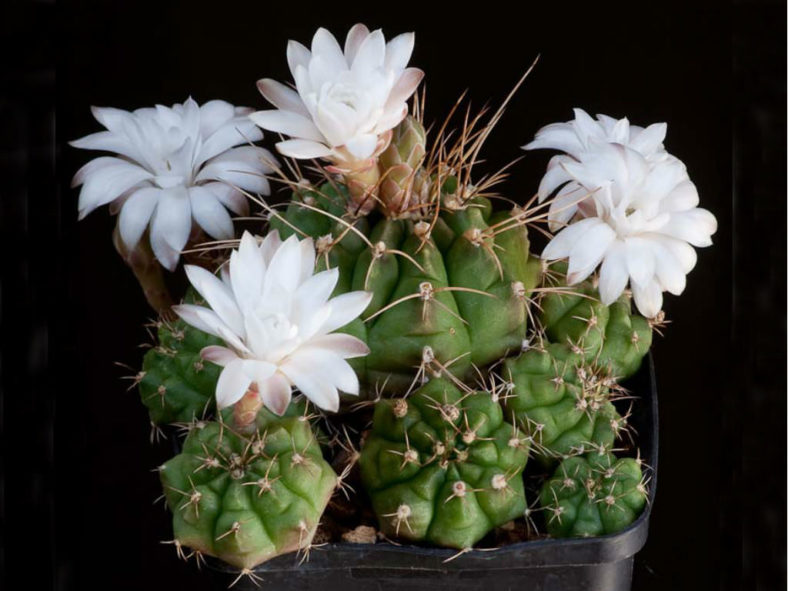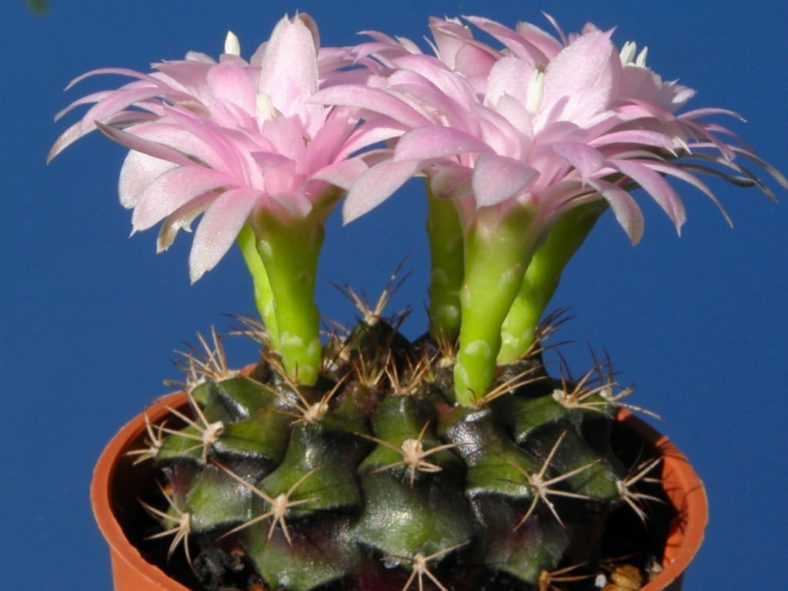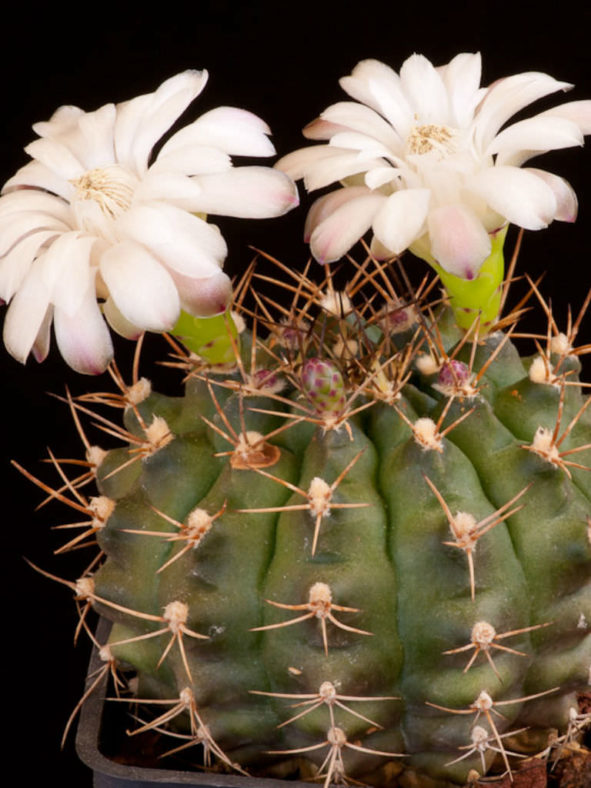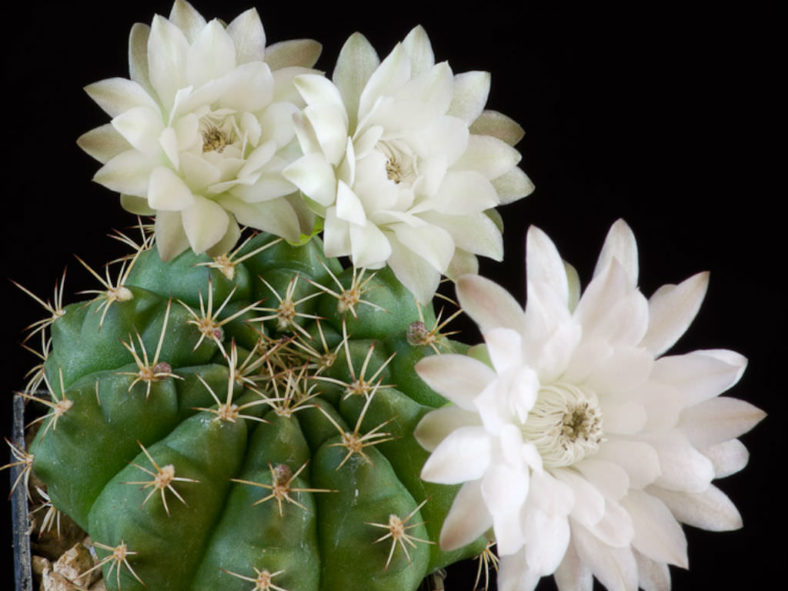Scientific Name
Gymnocalycium anisitsii (K.Schum.) Britton & Rose
Synonym(s)
Echinocactus anisitsii, Echinocactus damsii, Gymnocalycium anisitsii subsp. damsii, Gymnocalycium damsii
Scientific Classification
Family: Cactaceae
Subfamily: Cactoideae
Tribe: Trichocereeae
Genus: Gymnocalycium
Etymology
The specific epithet "anisitsii" (pronounced "mon-VIL-ee-eye") honors Johann Daniel Anisits (1856-1911), a Hungarian-born Paraguayan pharmacist, biologist, botanist, and plant collector.
Origin
Gymnocalycium anisitsii is native to southern Brazil, Bolivia, and Paraguay. It grows in open areas protected by low bushes.
Description
Gymnocalycium anisitsii is a small cactus with globular, green to bronze stems with 8 to 11 notched ribs lined with clusters of yellowish to brownish spines. It can grow either solitary or slowly clustering, and the stems can reach a height of 4 inches (10 cm) and a diameter of 6 inches (15 cm). The spines are twisted and can grow up to 2.4 inches (6 cm) long. Each areole bears 5 to 7, rarely up to 9, radial spines. The central spines are usually absent.
The flowers are white to creamy pink, funnel-shaped, and can reach a length of up to 2.4 inches (6 cm). The long, red fruits are cylindrical and can grow up to 1 inch (2.5 cm) long and 0.4 inch (1 cm) in diameter.

Hardiness
USDA hardiness zones 9b to 11b: from 25°F (-3.9°C) to 50°F (10°C).
How to Grow and Care
Some Gymnocalyciums seek shade in the wild, among shrubs or grasses, while others grow in full sun. Therefore, some plants require light shading from the sun in the hottest months, but overdoing this can result in flower loss.
The balance of the potting medium should be sufficient to allow good drainage so that the plants do not sit in soggy soil for more than a day or two after watering.
While the plants are growing well, watering in the summer can be frequent (weekly for small plants in small pots), but always allow the compost to nearly dry out before rewatering. Watering in the winter months is unwise and unnecessary. The difficult times are spring and autumn.
Offset-producing species can be readily propagated by cuttings. Gymnocalycium seeds germinate well when fresh and can be stored for a few years in cold conditions.
See more at How to Grow and Care for Gymnocalycium.
Forms and Varieties
Links
- Back to genus Gymnocalycium
- Succupedia: Browse succulents by Scientific Name, Common Name, Genus, Family, USDA Hardiness Zone, Origin, or cacti by Genus
Photo Gallery
Click on a photo to see a larger version.


